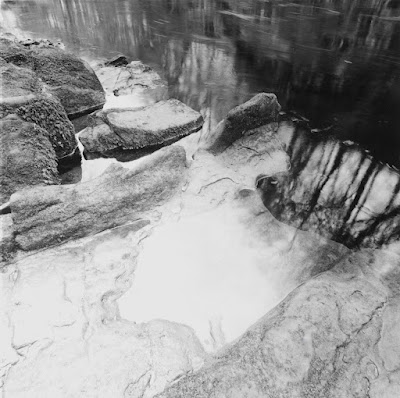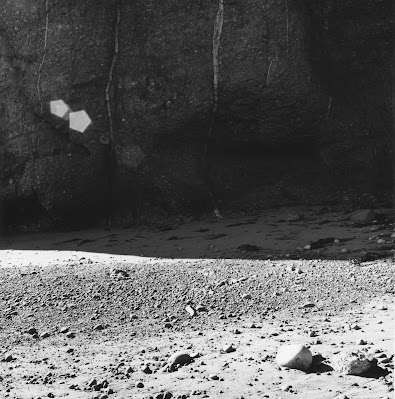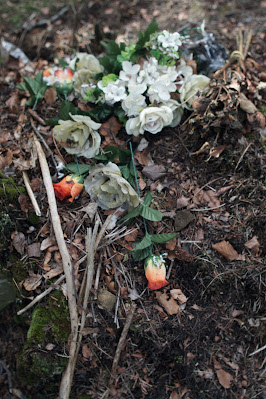Morning folks - well a very reflective thought for today's post.
Rivers - well, what can I say. I've spent all of my life either near one, right on top of one, or finding one accidentally; from the Grand Union Canal in London - home of many childhood fishing exploits with ancient knackered gear, though to one of Scotland's great trout rivers, to now, living near the mighty Tay, I've always been around them. I've never been happier on holiday than when we've been near a river and especially, when I get to explore new turf (as it were.)
But now as life moves on, the metaphorical presence of rivers comes more to mind.
We're all on a journey from source to sea; we arrive, new at that springhead and move onto broader straights, narrows, pools and rapids, until finally we're there on the shores of a greater mass of water - largely unknown and kind of frightening in a way, and yet, it is made of the same stuff as we have known all our life.
And darkness too.
Don't forget that.
The same darkness we sprang out of in those high uplands; the end is both the source and the end.
And that is only metaphorically.
The literal meat and potatoes, from the small splashing burn, through the falls and onto the mighty tidal reaches of an estuary, they've all shaped me.
I suppose one can see wind as a form of water, but dry, that moves and shapes the land - that is a fascination and a current and future way of working for me . . yeah it's borrowed from Blakemore again, but he was well ahead of the curve.
It would probably be easier to do this on digital, but hey-ho, I am a curmudgeonly Old Hector.
Anyway as I get older, the more I shrink from how man is largely becoming disassociated from nature.
I see people on their phones and embracing this and that technological advancement; I see really truly young children scrolling on screens faster than a teenager; I see Swiftys (Single White Female In A [Chelsea] Tractor) unthinking about the future of their grandchildren; I see Ignorance being regarded as Power; I see the very real rise of the robots - a thing that the great thinkers of the last century said was supposed to make our lives easier and yet the more I see it, the more I hope for the Butlerian Jihad (go on . . look it up).
I am sure people of every generation have felt this before, but to be honest all I want to do is hunker down, preferably under a tarp, and listen to the rain on the canvas, and hear the river rushing by.
No connection to 'modernity' at all.
Because for all we think we're the bees-knees, we're really incredibly simple.
I've written about this before on FB, but now it has more pertinence than ever to me.
Anyway, what is it with me and rivers, or indeed any body of water?
I can't say more than it is part of me. (But you did just say that y'berk!)
So, to that end. we recently had a lovely holiday, in an amazing lodge in a truly ancient setting.
The site was the loop of a river - when viewed from above, it bears strong resemblance to stone-age carvings.
A Christian site was established there in about 640 AD (not unusual for early Christianity to appropriate early pagan sites); this was burned to the ground in the 850's and a new church set up in the 1150's (!) this too was burned down in the 1300's and the place was largely left alone after that.
It is actually an incredibly good defensive site as the drop to the river is steep and prolonged.
At one time there was a defensive ditch cast across the 'peninsula',
Anyway, whether it was the 'difficult' to photograph situ or just a general malaise on my behalf, I found it near impossible to take a picture - only three 120's in a week - that is something of a non-record for me.
It was also virtually impossible to get to the river in a lot of places given the steepness of the banking and I was left utterly frustrated way above the rush and tumble, on high banks covered with trees . .. so I thought, I know what . . . I'll take some trees . . . and other things.
As I've mentioned before I was long an admirer of John Blakemore's use of a Press Shutter to take multiple exposures of landscapes. Not being the owner of a Press Shutter and indeed these days seriously pondering getting rid of the LF gear, I have adopted another methodology - that of the fairly long exposure.
Yes I know, everyone and their chimp does that these days . . cue the horrific waterfall shots of which I am a participant.
In my case though, it is more an urge TO NOT TAKE A PRETTY PICTURE, more that I like to see how time and weather react with a landscape.
I don't just use a ND filter either - I've found I can get satisfying results using a red (Hoya Red R1 or equivalent) - I know what people say about using a red filter, however in the right circumstances (in my case, in heavy shade with glimpses of sun) it can be a surprisingly versatile companion.
A lot of these exposures were long - ranging from around 15 seconds to a full-on 175 seconds!
I have also in recent times taken on a new development regime.
If you read FB long enough you'd discover that I went through a long patch whereby I only used Pyrocat-HD - a truly wonderful developer.
But when my home-brew and Wet Plate Supplies quantities ran out, I stopped using it in favour of somethng else that was a bit faster in time, still gave me good compensation on the inevitable deep shadow/bright sun combos and was more readily available (Nik and Trik make a version of PHD for over here, but part A is not made with Glycol - I've got some but have yet to use it.)
Anyway, Rodinal and its copies . . to-wit . . Fomadon R09.
It's an incredibly versatile developer, but can be a little heavy-handed if you're not careful.
So I've been trying it at the dilution of 1+75 . . and have discovered it to be really excellent for perceived sharpness AND compensation for regions of a negative that fall over Z VII.
I've also discovered a renewed love for Ilford's FP4 (but worraboot the BLOBBIES I hear you shout . . more of that in a minute ***) which I use at EI 80.
With 1+75 R09, I give it 30 seconds of constant agitation and then 4 gentle but firm twirls with a Paterson twirly Stick every 10 seconds. Development time is 9 mins 30 seconds and it renders the negatives absolutely fine, so long as you've given them plenty of exposure.
I used to expose on Z III cos Ansel said you should, but then after reading an article by Bruce Barnbaum I started placing shadows on Z IV, and with this combo it really works.
The thing about the Zone System, is that it is a brilliant way of viewing light and getting something akin to what you are seeing in the flesh on a negative, but you also have to remember it was written for older materials and largely sheet film.
You can obsess to the nth degree about values and such-like (and I HAVE read all the peripheral publications - Zone VI Workshop, etc etc; all those concerned young men with beards and densitometers) and truly belive that no matter what, you can often fix tonal mistakes realatively simply in the printing process.
Another hint came from Sir Ralph Gibson . . . he said if a print wasn't emerging in the way he wanted in the developer (ie he'd not exposed it enough, etc) he simply flipped it over in the developer, turned off the safelight and left the darkroom. I've done this quite often for up to and around 8 minutes with nary a hint of fog, but what it does is carry on developing the highlights.
(Gibson said he'd been interrupted by the phone during a session, had flipped the print over, taken the call and when he came back a while later, looked at the print and liked what he saw.)
So, say you've got a print with heavy shadow and really ott highlights, you can balance the exposure of the print so that the shadows come to full development and the bits that look pretty white (when the shadows are developed) will carry on developing and actually balance themselves within the print.
It's not perfect science and should be viewed with the idea of EXPERIMENTATION in your head.
I suppose it is a mild form of preflash or even split trousers without the wizard's cloak.
You should try it - it works.
*** Yeah but worraboot the BLOBBIES?
OK - you may have noticed a while back my avowed intent to stop using Ilford film, simple because of the terrible mottle. It has destroyed a few films of mine.
So, having a convo with Bruce, he mentioned that wetting agent was used on Ilford's film and the instructions are not to use a waterbath pre-development.
Wetting agents are part and parcel of the coating process for every manufacturer - they're needed to provide a consistent surface layer on the carrier, but the more I thought about it, the more I wondered whether the mottle was somehow allied to wetting agent.
It sort of looked bubbly and weird and something that could be allied to random bubbles.
So I took some FP4 from a batch which I'd stopped using, and gave it a proper waterbath before developing.
We're talking at a minimum 5 minutes - sometimes up to 10 whilst I get everything else ready. And, so far, I've not had the dreaded blobbies.
Now this could all be bullshit on my behalf - I don't know.
All I know is maybe you should try it . . .
Anyway, after all that THE TREES . . well a couple anyway.
Below are all scans off of some of the prints - there's very few because time has not been on my side (so stick that up your hosepipe Sir Mick!)
All prints were made on Foma 111 fibre and approximately Grade 4 - I've found it really needs that contrast boost as a paper.
It's also curlier than a bag full of Quavers . . and has literally taken over a month to straighten out - honest I took these to the Forum, took them out of their sleeves and I had what looked like curls of dried fish sitting on the table - any presence from the prints was utterly ruined by people going: "What the Feck??!!"
The pictures aren't much, but they're my Not Much.
And that is it for the moment . . normal service will be resumed shortly.
I've just spent two weeks painting what must be well over 200 square meters of wall and ceiling (and ELEVEN [!!] doorways) and am kerknackered, but strangely enthused to go and take photos again.
Be good and keep taking the tablets.
H xx
This piece was made with a lovely iMac from Neil - hi Neil, and a CD of Brian Eno's Discrete music - a piece of music which describes the descriptors perfectly. Both pieces of technology, granted, but really quite 'innocent' when one thinks of the changes that will be coming down the line in the next few years.
.jpeg)
.jpeg)
.jpeg)
.jpeg)
.jpeg)


































